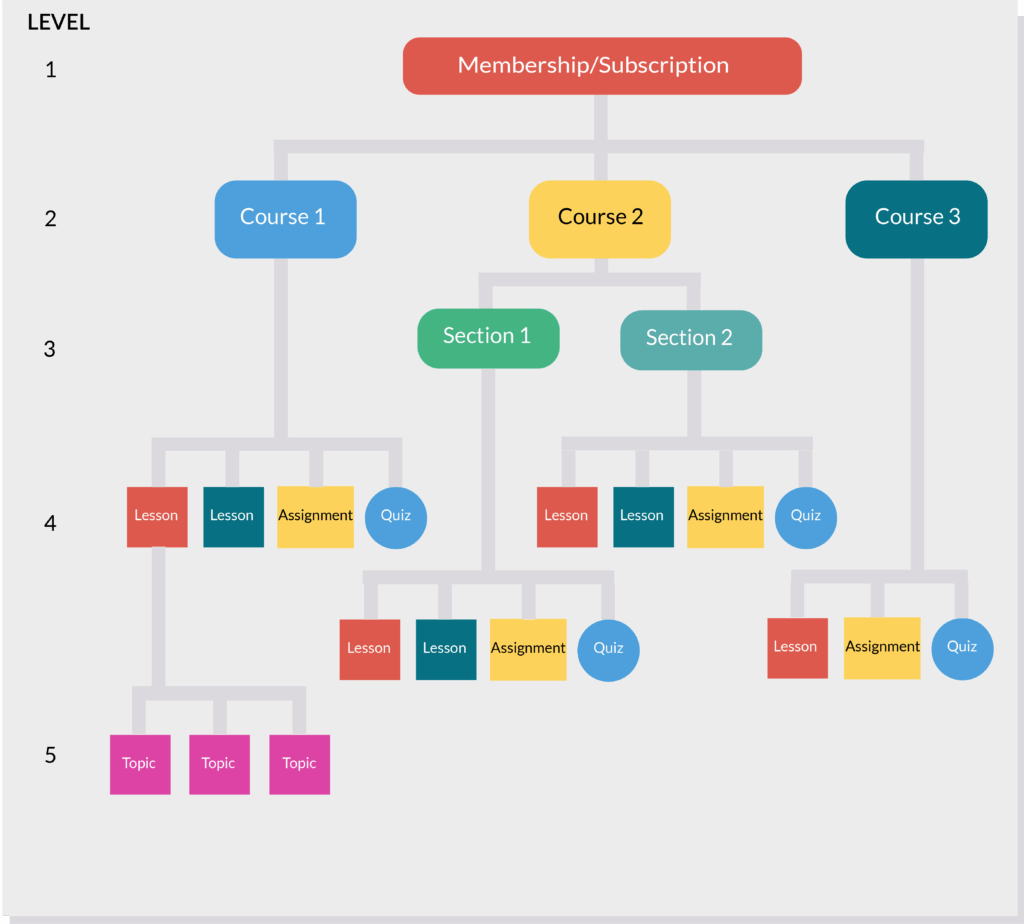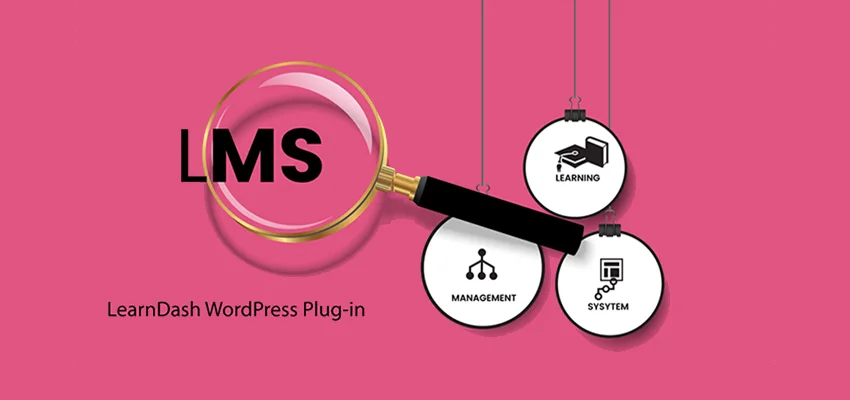#learndash #wordpress #lmssoftware
AI Create Index 30 (3 = AI was used in the research for the content, and some of the points were written by AI O = AI was not used in generation of the graphics) THIS IS 70% ORIGINAL CONTENT.
In our earlier articles we warned that implementing LearnDash is not for the feint-hearted. It requires a good level of technical knowledge of WordPress and there is a relatively steep learning curve in the process. One of the key things we learned is the value of planning your installation – and one key set of design decisions is around Course Structure. Here we look at the key steps and decisions you will need to make to get the best out of your installation.
Step 1 - Plan your course structure…
A logical and intuitive course hierarchy ensures that learners can navigate the content easily and progress through the material at a pace that fosters understanding and retention as well as taking into account tracking and reporting requirements.
Understanding the LearnDash hierarchy
There are three core levels in LearnDash (four if you count the ability to break course into “Course Sections” as an extra layer).
- Courses – The highest level of the hierarchy, containing all the content related to a specific subject or learning objective.
Course Sections: To make navigation easier for learners where courses may have a large number of lessons, LearnDash V3.0 introduced the notion of Course Sections.) Sections don’t contain content themselves but serve as containers for a number of lessons.
- Lessons – The next level, each lesson covers a key component or topic within the course. Lessons should be clearly focused on a specific concept or skill.
- Topics – These break lessons down into smaller, more manageable parts.
This updated structure means you can now better group and manage complex courses by adding Sections as a notional mid-layer. This is especially helpful for longer or more advanced courses where lessons benefit from being grouped into thematic units or phases.

In addition, LearnDash also defines the following components:
Quizzes – These can be added at the end of lessons or topics to assess understanding. Quizzes can be designed with various types of questions such as multiple-choice, true/false, and open-ended questions.
Assignments – For more in-depth assessments, assignments allow learners to submit work that requires manual grading by an instructor.
Step 2 – Organize your memberships…
It is important to note, that there is also an implied 5th level to the hierarchy. We will say more about membership options in a later article but, once you add a membership plug-in to your site, you will be able to create memberships that link together a group or set of courses. In effect, you will want to create learning plans that consist of multiple courses, quizzes and assignments and allow your learner to subscribe to this plan via a single membership and registration.
Step 3 - Define pre-requisites and learning sequences…
LearnDash also allows you to control the sequence in which learners access content with some important extra features:
- Prerequisites – Prerequisites are used to ensure that learners have mastered foundational material before progressing to more advanced topics. For example, you might require learners to complete “Lesson 1: Introduction to Marketing” before moving on to “Lesson 2: Advanced Marketing Strategies.”
- Drip-feeding content – Drip-feeding allows you to release course content gradually over time. This is useful for preventing learners from skipping ahead and for keeping them engaged. Drip schedules can be based on specific dates or on when the learner first enrols in the course.
- Sequential learning paths – You can also enforce a strict course progression, requiring learners to complete one lesson or topic before unlocking the next. This can be particularly useful in structured learning programs where mastery of earlier material is crucial for understanding later lessons.
Key hints and tips…
- Firstly, we strongly advise that you to think about your course hierarchy before you start developing your LearnDash site. Changes to the structure at a later stage can be costly.
- Keep it simple. Unless you have a really compelling reason to add the ‘topic’ level in your hierarchy, then we would advise you don’t. LearnDash itself only reports on ‘course’ progress and completion. To provide more detailed reporting you will need an additional plug-in – and many of those don’t report down to topic level. (We will cover tracking and reporting later in this series).
- Consider Using “Course Sections”: If you’re working with large numbers of lessons, then Sections allow you to break up content into logical parts (e.g., “Part 1: Foundations”, “Part 2: Advanced Concepts”), each containing multiple lessons. This can improve course navigation and usability.
- Don’t get hung up on the terminology. As we have pointed out in earlier articles, LMS’s tend to be designed for either the ‘commercial’, ‘corporate’ or ‘academic’ market. And in each market what constitutes a ‘course’ is very different.
- In a commercial context, a ‘membership’ or ‘subscription’ is the basic unit of sale and may consist of one, or a number of courses which in turn will consist of modules, lessons, quizzes and assignments.
- If you are using LearnDash in an ‘academic’ or college environment then using sections in the hierarchy is really useful. It means that something like a 10-week course in Statistics would be a single LearnDash ‘course’ with ten weekly ‘modules’ or “sections” each containing various ‘lessons’. Note that the basic unit of ‘registration’ is the course, so the student ‘subscription’ would be a single course. Additional add-ons might be required for progress tracking and reporting down to the lesson level.
In conclusion...
A solid course structure is essential to the success of any online learning platform. By leveraging LearnDash’s hierarchy of courses, sections, lessons, topics, quizzes, and assignments, you can create a clear, logical flow that promotes learning and engagement. Utilizing features like prerequisites, drip content, and progress tracking will help ensure that learners stay on track and complete the course successfully.
In the next part of this series, we will take a close look at how to customize your LearnDash site to rinclude your own branding and visual identity…
Plus, if you want to know more about how to go about installing LearnDash on your own website we are always happy to help – asking our advice is free! Only getting us to do it for you is chargeable.
Affiliate agreements
Please feel free to share this article and don’t forget to follow our company page on LinkedIn for news of further articles or free courses on this site by using the link opposite.

